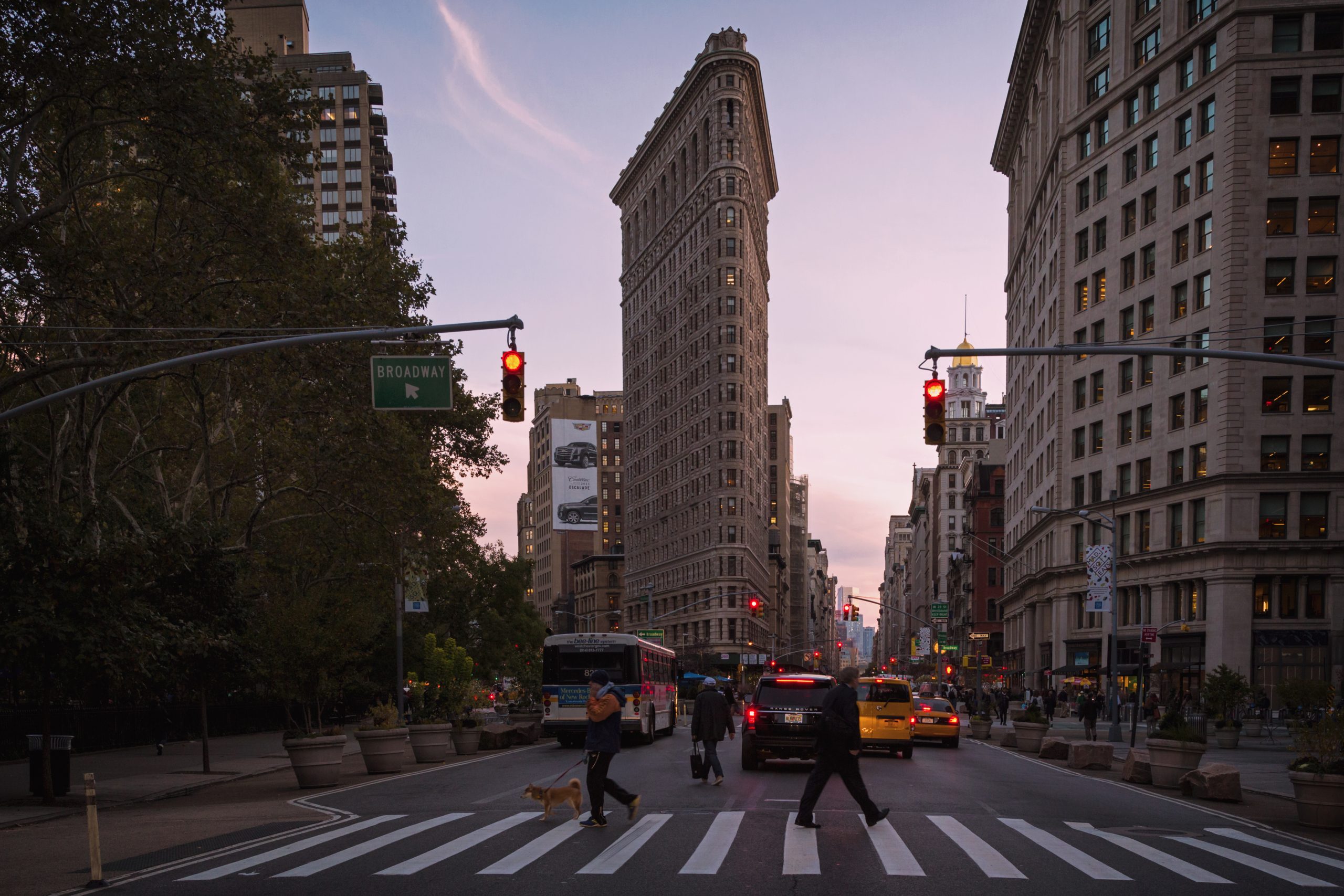
By the turn of the 20th century, New York’s skyline was changing fast, and architects and builders were competing to reach the skies. The city was in the midst of an economic boom, and with the development of steel-frame construction, this period marked the beginning of a skyscraper race, as corporations sought to showcase their prestige by erecting taller and more visually striking corporate buildings. Among these was the Flatiron Building.
Rising at the intersection of Fifth Avenue and Broadway, the Flatiron was a departure from the traditional box-like shapes dominating the city’s architecture. Designed by architect Daniel Burnham, its striking 22 story-high, wedge-shaped structure soon became an iconic architectural site, even appearing in Sam Raimi’s Spider-Man trilogy, symbolizing New York’s architectural heart as the office of the Daily Bugle.
A steel skeleton, one of the first to be used, enabled Manhattan’s Flatiron Building to become the tallest building in the world, approximately 300 feet high, at the time of its completion. Photo by Charles R. Ritzmann/Library of Congress/Corbis/VCG via Getty Images.
Nicknamed the Flatiron for its resemblance to a clothes iron, the building was inaugurated in 1902 and instantly captured public attention. It wasn’t just a new addition to New York’s geography; it was a bold declaration of architectural ambition and ingenuity.
Close view of ornament on the building exterior of Flatiron Building in New York City. The Flatiron Building, originally the Fuller Building, is a steel-framed landmarked building located at 175 Fifth Avenue in the Flatiron District neighborhood of borough of Manhattan, New York City. Photo by: Sergi Reboredo/VW Pics/Universal Images Group via Getty Images.
At 87 meters tall, it was one of the first skyscrapers built with a steel frame, enabling the building to withstand the powerful winds that barreled down Fifth Avenue. Burnham trained in Beaux-Arts architecture, and chose to adorn the Flatiron’s slender façade with glazed terracotta and limestone details, creating an intricate exterior that drew even more intrigue to its unconventional shape. The building was initially known as the Fuller Building, as it housed the headquarters of the Chicago-based Fuller Company.
New Yorkers were initially skeptical of the Flatiron’s design, and critics predicted it might collapse. The New York Tribune deemed it “the greatest inanimate troublemaker in New York.” At the time, steel-frame construction was met with caution by the general public, who feared that such tall, slender buildings might not be stable. The Flatiron’s slender triangular shape created powerful winds, known as the “Flatiron breeze” which only heightened the building’s fame. However, Burnham’s architecturally daring structure proved strong.
Jeffrey Gural [L] and Jacob Garlick [R] at the auction of the Flatiron Building on 22 March 22, 2023. Photo: Christina Horsten via Getty Images.
The Flatiron has woven itself into the identity of New York City, its once-mocked structure is now a celebrated landmark. Decade after decade, it stands as a testament to the idea that bold architecture can reshape a city’s character, and proves that true icons are those that dare to stand apart.
Even the world’s most ambitious structure began with a humble plan. In Blueprint, we drill down to the foundations of dream homes and iconic buildings to explore how architects and designers brought them to life.